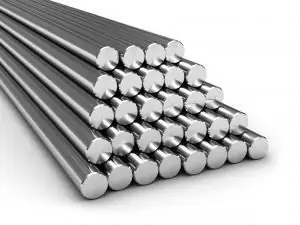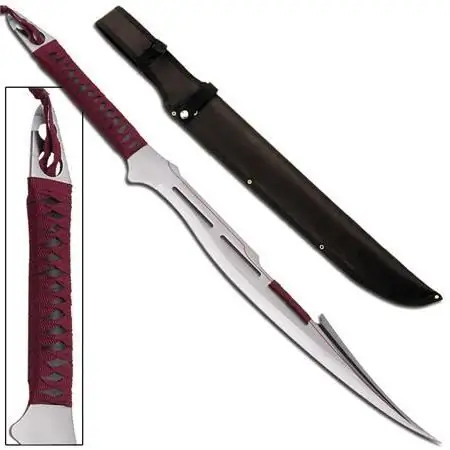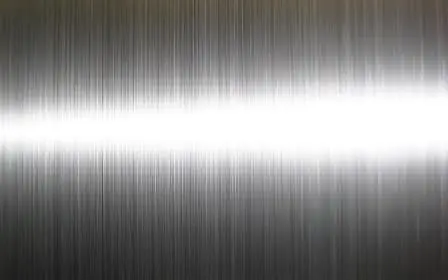2026 Author: Howard Calhoun | [email protected]. Last modified: 2025-01-24 13:10:31
Every year, a lot of metal is lost due to corrosion. However, even more damage is caused by the failure of metal products as a result of corrosion. The costs required for the replacement of parts or current repairs of devices, cars, sea and river vessels, equipment used in chemical production are many times higher than the cost of the material used to manufacture them.
There are also significant indirect losses. These include, for example, gas or oil leakage from pipelines damaged by corrosion, food spoilage, destruction of building structures, and much more. Therefore, the fight against metal corrosion is of paramount importance.
Why does metal materials break down?
Before we move on to the question of what is corrosion-resistant steel, let's understand the concept of corrosion and the essence of this process.
Translated from the Latin corroder - corrosive. Slow spontaneous destruction of metals and alloys based on them, occurring under the chemical influence of the environmentenvironment is called corrosion. The reason for this destruction is the chemical interaction (redox reactions) of metallic materials with the gaseous or liquid medium in which they are located.

What are stainless steels and alloys?
Products made of stainless and heat-resistant steel or their alloys are designed to work in aggressive environments at high or normal temperatures. Therefore, the main requirement for the materials of this group is heat resistance (resistance to a gaseous environment or steam at high temperatures) or corrosion resistance (the ability to effectively withstand the effects of aggressive factors at normal temperatures).
Corrosion resistance is characteristic of metal products, on the surface of which a strong passivating film is formed in an aggressive environment, which prevents the penetration into deeper layers of the metal and the interaction of an aggressive substance with them.
In other words, stainless steel is steel that is resistant to intergranular, chemical, electrochemical and other corrosion.

Chemical composition
The properties of a metal are determined by its chemical composition. With a chromium content of 12-13%, the steel becomes stainless, that is, stable in the atmosphere and chemical environments. Increasing the chromium content to 28-30% makes it stable in aggressive environments.
Among other elements used for alloying,includes manganese, aluminum, titanium, nickel. The most widely used are alloys, in which the average nickel content is 10%, chromium - 18%, carbon - from 0.08 or 0.12%, titanium - 1% (12X18H10T - corrosion-resistant steel, GOST 5632).

Classification by microstructure type: austenitic stainless steel grade
The resistance of this class to corrosive attack is increased by nickel (from 5 to 15%) and chromium (from 15 to 20%) alloying elements. Austenitic alloys are insensitive to intergranular corrosion, provided that the carbon content in them is less than the limit of its solubility in austenite (0.02-0.03% or less). Non-magnetic, well subject to welding, cold and hot deformation. They have excellent technology. It is the best steel for fasteners, weldments and applications in various industries.
Martensitic class
Stainless steels in the martensitic class can be magnetic and have higher - in comparison with austenitic - indicators of maximum hardness. Hardening is achieved by quenching and tempering. Good for products intended for use in medium to light environments (such as some food processing products or razor blades).
Ferrite Grade
With high corrosion resistance, the properties of these grades are similar to mild steel. The average content of chromium is11-17%. Used in the production of household appliances, elements of architectural interior decoration, kitchen utensils.
Austenitic ferritic grade
Corrosion-resistant stainless steels of this class are distinguished by a reduced nickel content and a high chromium content (from 21 to 28%). Niobium, titanium, copper act as additional alloying elements. After heat treatment, the ratio of ferrite and austenite is approximately one to one.
Austenitic-ferritic steels are twice as strong as austenitic steels. At the same time, they are ductile, resist shock loads well, have a low level of corrosion cracking and high resistance to intergranular corrosion. Recommended for use in the construction industry, manufacturing industry, for the manufacture of products that will come into contact with sea water.
Austenitic-martensitic grade
Chromium content from 12 to 18%, nickel - from 3.7 to 7.5%. Additional elements - chrome and aluminum. They are hardened by hardening (t > 975 °С) and subsequent tempering (t=450-500 °С). Austenitic-martensitic stainless steels are well welded and have high mechanical properties.

Stainless steel: price (factors influencing formation)
The composition of corrosion-resistant metals includes expensive alloying elements such as chromium, nickel, titanium, molybdenum. Their cost is decisive in pricing. Because other grades (carbon, structural,ball bearing, tool, etc.) contain the listed elements in much smaller quantities, then in comparison with them, the cost of corrosion-resistant steels is always higher. However, the price may vary depending on market conditions and the costs required to produce stainless steel.

Mechanical properties
Stainless steel grades must have mechanical properties that meet established manufacturing standards. These include:
- maximum Brinell hardness (HB);
- elongation (%);
- yield strength (H/mm2);
- tensile strength (H/mm2).
After production, each batch (melting) of marketable products is checked for compliance with the mechanical properties and microstructure of the steel grade to GOST. The results of the laboratory examination of the samples are indicated in the certificate of manufacture.

Steel grade designation system
A wide range of alloys and steels is produced in various countries of the world. At the same time, there is no single international system for their labeling yet.
In the United States of America, there are several designation systems at once. This situation, due to the presence of a large number of standardization organizations (AJS, ANSI, ACJ, SAE, AWS, ASTM, ASME), creates certain difficulties for partners, contractors and customers of metal products from American manufacturers from other countries.
In Japan steelare marked with letters and numbers indicating their group (low-alloyed, high-alloyed, special-purpose alloys, medium-alloyed, high-quality, high-quality, etc.), the serial number in it and the properties of the metal.
In the countries of the European Union, the designations are regulated by the EN 100 27 standard, which determines the order in which the name and serial number are assigned.
In the Russian Federation there is an alphanumeric system developed during the Soviet Union, in accordance with which steel grades are designated. GOST prescribes to indicate each alloying chemical element that is part of the metal with a capital Russian letter.
For manganese, this is G, silicon - C, chromium - X, nickel - H, molybdenum - M, tungsten - B, vanadium - F, titanium - T, aluminum - Yu, niobium - B, cob alt - K, zirconium - C, boron - R.
The numbers following the letter indicate the percentage of alloying elements. If the steel composition contains less than 1% of the alloying element, then the number is not affixed, with a content of 1 to 2% after the letter put 1. The two-digit number indicated at the beginning of the grade is necessary to indicate the average carbon content in hundredths of a percent within the grade composition.

Stainless steel product range
Corrosion resistant steel is used for the following products:
- heat-treated etched and polished sheets;
- heat-treated non-etched sheets;
- thermallyraw and unetched sheets;
- heat-, cold- and hot-worked seamless pipes;
- hot-rolled steel strip for general purposes;
- calibrated hexagons;
- stainless circles;
- stainless wire (heat treated and cold drawn);
- castings with special properties;
- forgings;
- other types for which GOSTs and technical instructions (TU) have been developed.
Scope of application
As one of the best examples of strength, aesthetics, resistance to the destructive force of corrosion and high temperatures, recyclability and durability, with excellent surface finish that meets all sanitary and hygienic requirements, stainless steel is widely used in almost all spheres of economic activity.

Stainless steel is in high demand in the petrochemical, chemical, pulp and paper, food, construction, electric power, shipbuilding and transport engineering, instrumentation and environmental industries.
The efficiency and durability of products made of stainless steel is determined by the right choice of its class and brand, understanding of the physical and chemical properties and microstructure structure. By using metals that are resistant to the destructive effects of corrosion, in exact accordance with their properties, we are able to take advantage of all the undeniablethe benefits of modern technology.
Recommended:
Food stainless steel: GOST. How to identify food grade stainless steel? What is the difference between food stainless steel and technical stainless steel?

The article talks about grades of food grade stainless steel. Read how to distinguish food stainless steel from technical
Heat-resistant alloys. Special steels and alloys. Production and use of heat-resistant alloys

Modern industry cannot be imagined without such material as steel. We encounter it at almost every turn. By introducing various chemical elements into its composition, it is possible to significantly improve the mechanical and operational properties
Steel: composition, properties, types and applications. Composition of stainless steel

Today, steel is used in the vast majority of industries. However, not everyone knows that the composition of steel, its properties, types and applications are very different from the production process of this product
Solder for soldering copper, aluminum, brass, steel, stainless steel. Solder composition for soldering. Types of solders for soldering

When it is necessary to securely fasten various solid joints together, soldering is most often chosen for this. This process is widespread in many industries. We have to solder and home craftsmen
440 steel - stainless steel. Steel 440: characteristics

Many people know 440 steel. It has established itself as a reliable, anti-corrosion, time-tested hard material, which is most often used for the manufacture of knives for various purposes. What is the secret of this alloy? What are its chemical, physical characteristics and applications?

